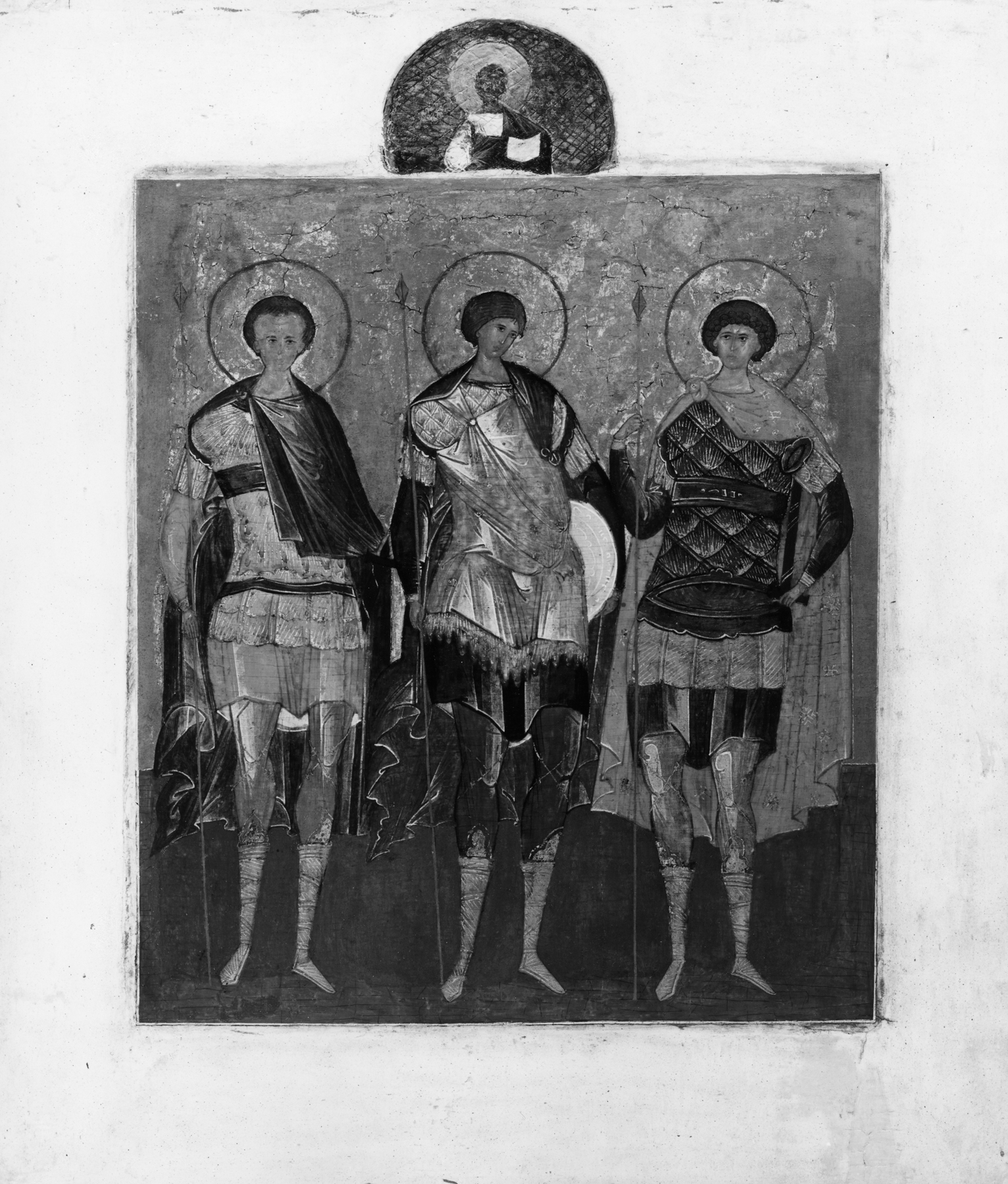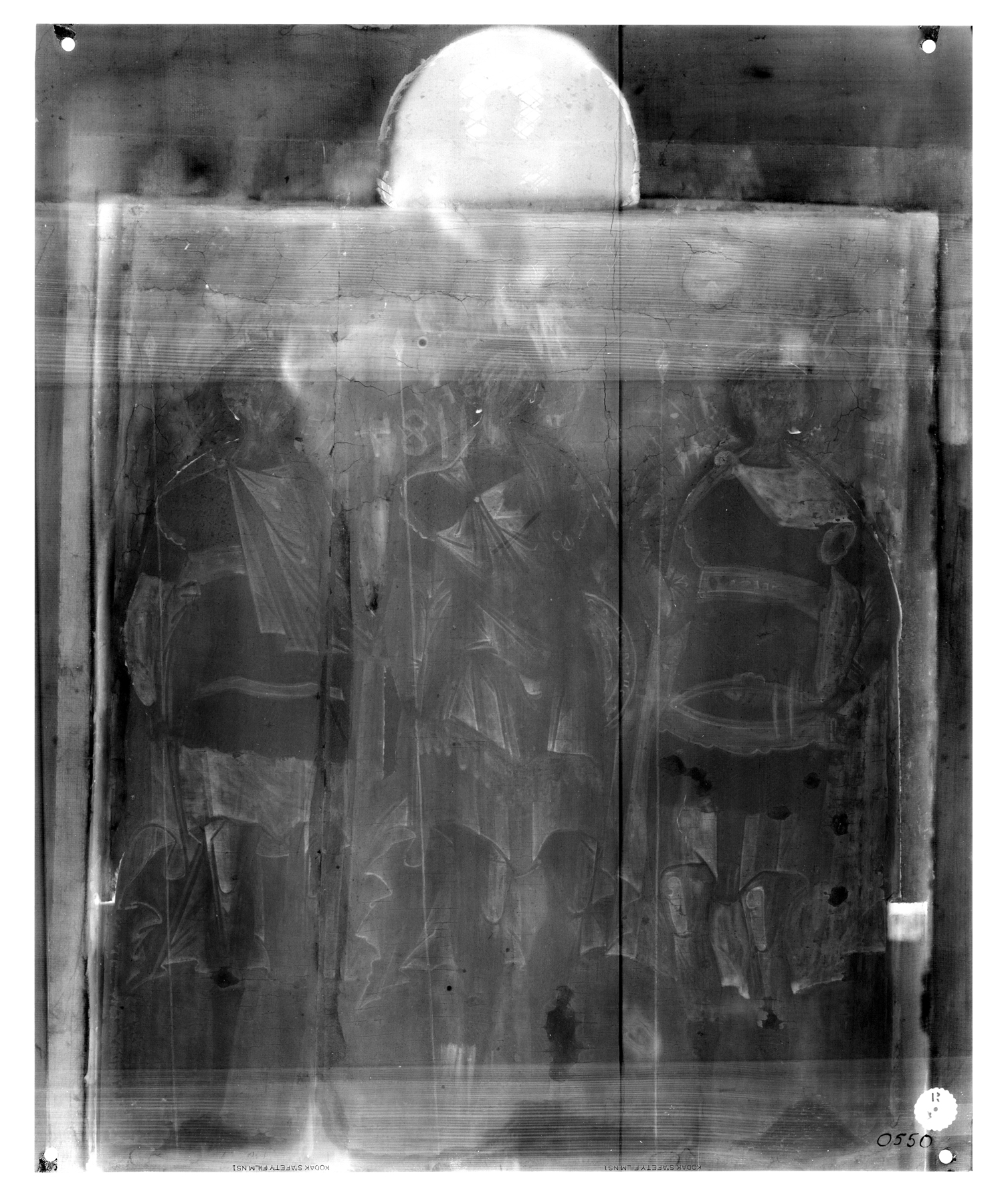Saint Demetrius, Mercurius, and George
(Byzantium and Early Russia)
The elongated figures and small heads of these warrior saints, as well as their solemnity and tranquility, are characteristic of the school of Dionysius, a master icon painter of the late 15th and early 16th centuries whose style became very influential. The three saints are identified by an old inscription on the back of the panel as Demetrius (patron saint of the ruling Rurikid dynasty), Mercurius, and George (patron saint of Moscow). As is traditional for "warrior saints," they are dressed in the style of Roman soldiers. The small image of Christ Emmanuel at the top was overpainted at a later date and only rediscovered in the course of modern conservation work.
Provenance
Provenance (from the French provenir, 'to come from/forth') is the chronology of the ownership, custody, or location of a historical object. Learn more about provenance at the Walters.
Alexandre Polovtsoff (Aleksandr Aleksandrovich Polovtsov), Paris [date of acquisition unknown], by purchase; Henry Walters, Baltimore, 1930, by purchase; Walters Art Museum, 1931, by bequest.
Exhibitions
| 1959-1960 | Russian Art: Icons and Decorative Arts from the Origin to the Twentieth Century. The Walters Art Gallery, Baltimore. |
Conservation
| Date | Description | Narrative |
|---|---|---|
| 9/21/1965 | Examination | examined for exhibition |
Geographies
Russia (Place of Origin)
Measurements
H: 20 5/8 x W: 17 1/2 in. (52.4 x 44.4 cm)
Credit Line
Acquired by Henry Walters, 1930
Location in Museum
Not on view
Accession Number
In libraries, galleries, museums, and archives, an accession number is a unique identifier assigned to each object in the collection.
In libraries, galleries, museums, and archives, an accession number is a unique identifier assigned to each object in the collection.
37.1184






